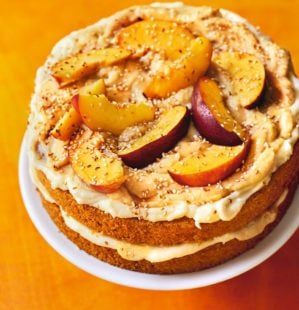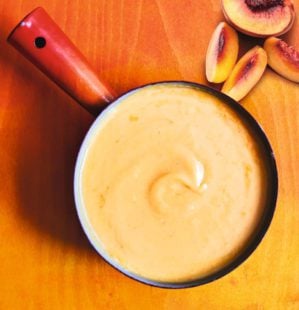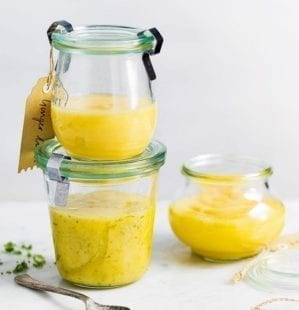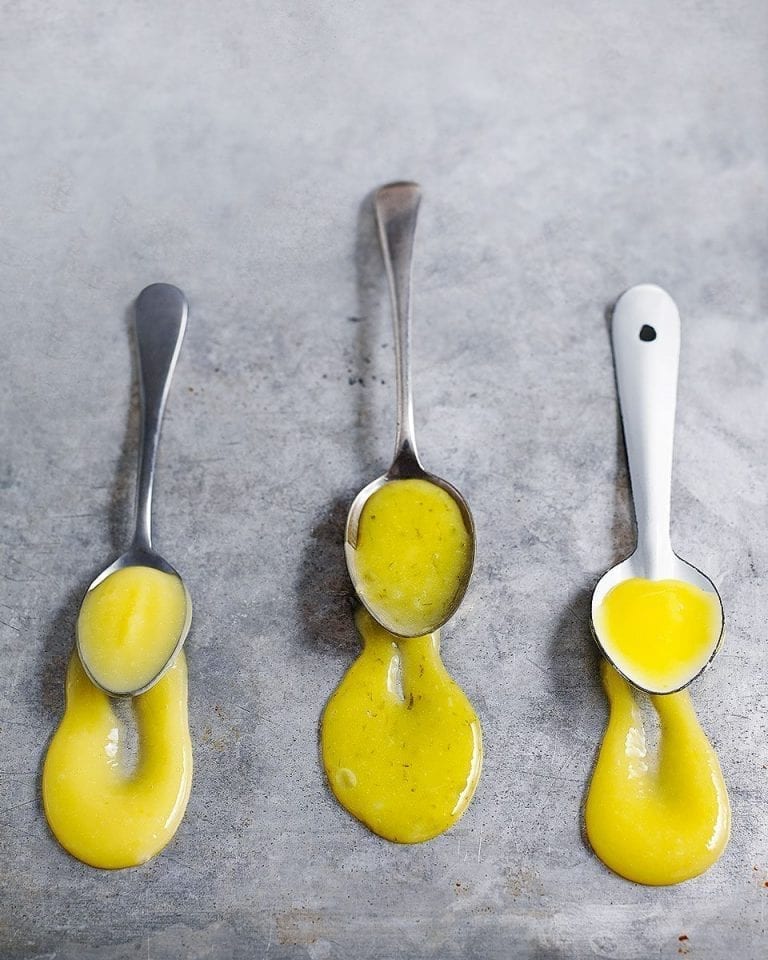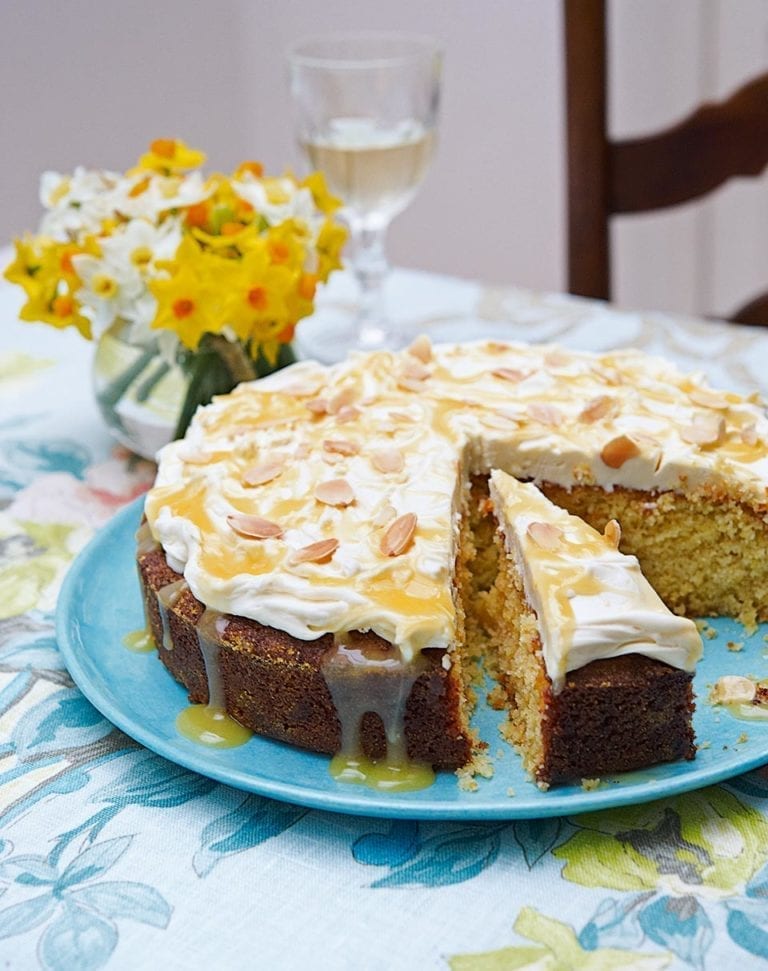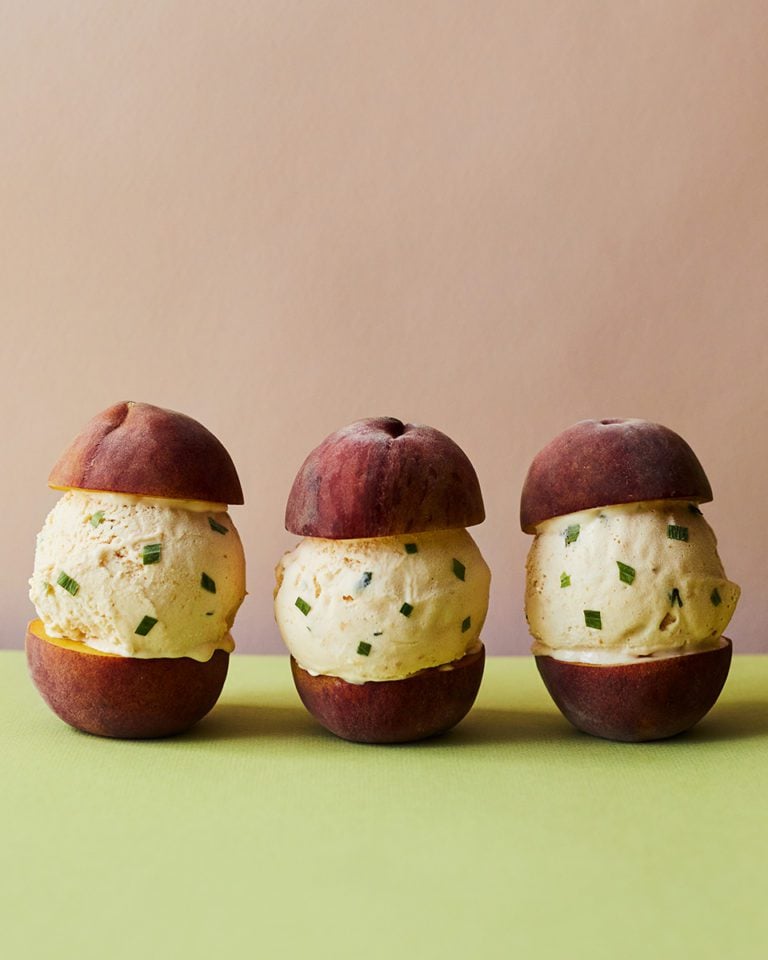Why nectarine curd should be on your radar
Jams and chutneys tend to hog the fruit preserving limelight, but there’s something about a smooth, buttery curd that makes it irresistible – and it’s easier than you think to make. In peak summer, the more common citrus fruit can step aside – it’s stone fruits’ time to shine! Emily Gussin takes you through the process from start to fruity finish…
Find more stone fruit recipes to enjoy here.
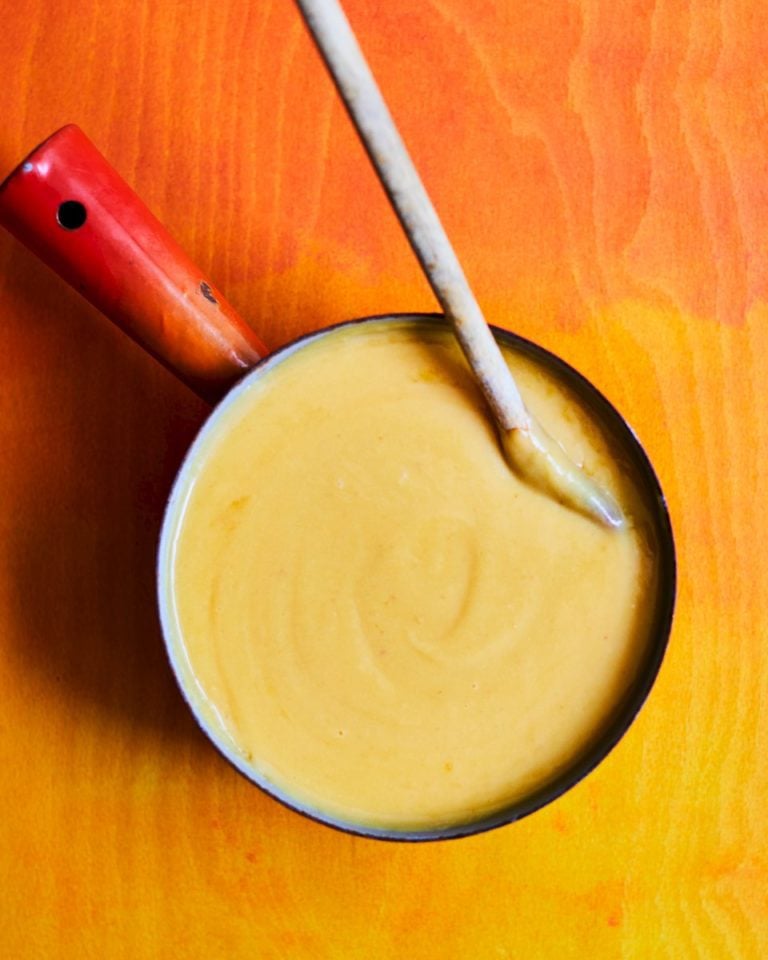
Stone fruit season is one of my favourites. Biting into something so juicy that you have to eat it over the sink is always a winner, especially when the out-of season alternatives are hard as bullets, never really ripen and taste of very little. And while I do love the small, tender plums and greengages grown in the UK, there is something about the smooth yellow flesh of a peach or nectarine that you can’t beat. It’s the true taste of sunshine.
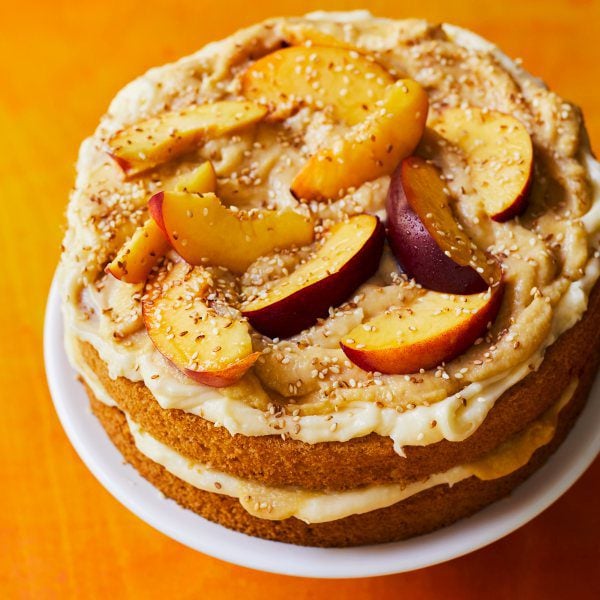
Of course, as with many of the best seasonal fruits, blink and you’ll miss them – with a year-long wait before they’re back. To extend that fresh, juicy, sunny taste, I make this nectarine curd. As curds are smooth and buttery they work best with punchy flavours – it’s why sharp lemons or sweet and sour passion fruit are popular choices. Nectarines work just as well, still offering enough acidity to create the required tang but with a sweeter finish.
Swapping fruits in and out of curds simply relies on the ratios of liquids and can be tweaked for taste to get the balance of sweet and tart. Where a citrus curd relies on pure juice and zest, stone fruit can be whizzed to a pulp, giving you a thicker base to work with. I keep the skins on, not just to save on waste but because it gives the curd a beautiful pinky-orange hue. If you have a good blender you won’t be left with any bits, but you can always pass the purée through a sieve before making it into the curd.
The importance of gentle heat
A curd is basically a custard made with fruit instead of dairy. And just like custard, the trickiest part of the process is adding the eggs without them scrambling. Gentle heat and taking your time are the best ways to stop this happening. Some recipes will suggest cooking the curd in a bain-marie (a bowl set above a pan of simmering water), as the indirect heat will give you more control, but I don’t think this is necessary. As long as you keep the pan over a medium heat and stir gently yet consistently, you’ll be fine. Just don’t let your mind wander or try to multitask; a good curd needs your full attention!
In this recipe, I’ve combined the nectarine and sugar mixture with the eggs off the heat (in the same way that you’d pour warmed milk/cream over the eggs to make custard), then poured the mixture back into the pan to thicken it up. This is a precautionary measure to ensure the heat doesn’t shock the eggs and scramble them. If the mixture in the pan isn’t too hot, you could crack the eggs straight in – but my method is still simple and far less risky.
The eggs
Some recipes will use a mixture of whole eggs with added egg yolks for richness. For this particular recipe, I find extra yolks aren’t needed – it still turns out beautifully and you don’t have to worry about leftover whites. Because it’s a stone fruit curd rather than a citrus one, the mixture starts with puréed fruit, so I find there’s enough body for that creamy texture anyway.
The butter
Some curd nerds swear by adding the butter at the very end, thickening it up through emulsification and suggesting it results in a lighter texture. This may be truer of citrus curds, where the whole mixture is lighter already, but I find mixing the butter with the other ingredients at the start of the process makes adding the eggs easier. Without the butter at the start, you’re more likely to end up with white flecks of curdled egg that will need to be sieved out before you finish. If the easier option works, why make it harder?
Find Emily’s nectarine curd recipe here. Use it to fill this spectacular tahini and nectarine cake.
Subscribe to our magazine
Food stories, skills and tested recipes, straight to your door... Enjoy 5 issues for just £5 with our special introductory offer.
Subscribe
Unleash your inner chef
Looking for inspiration? Receive the latest recipes with our newsletter
